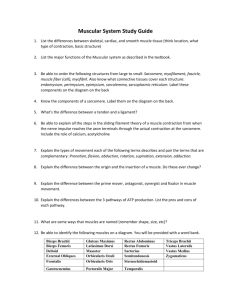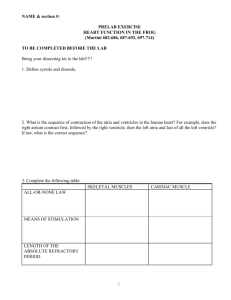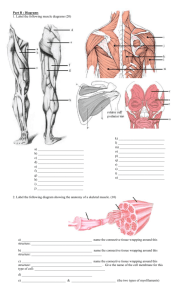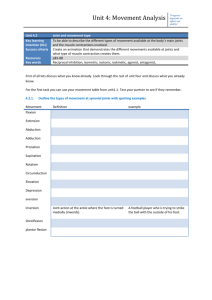Lesson 4.1 Joints and Motion
advertisement
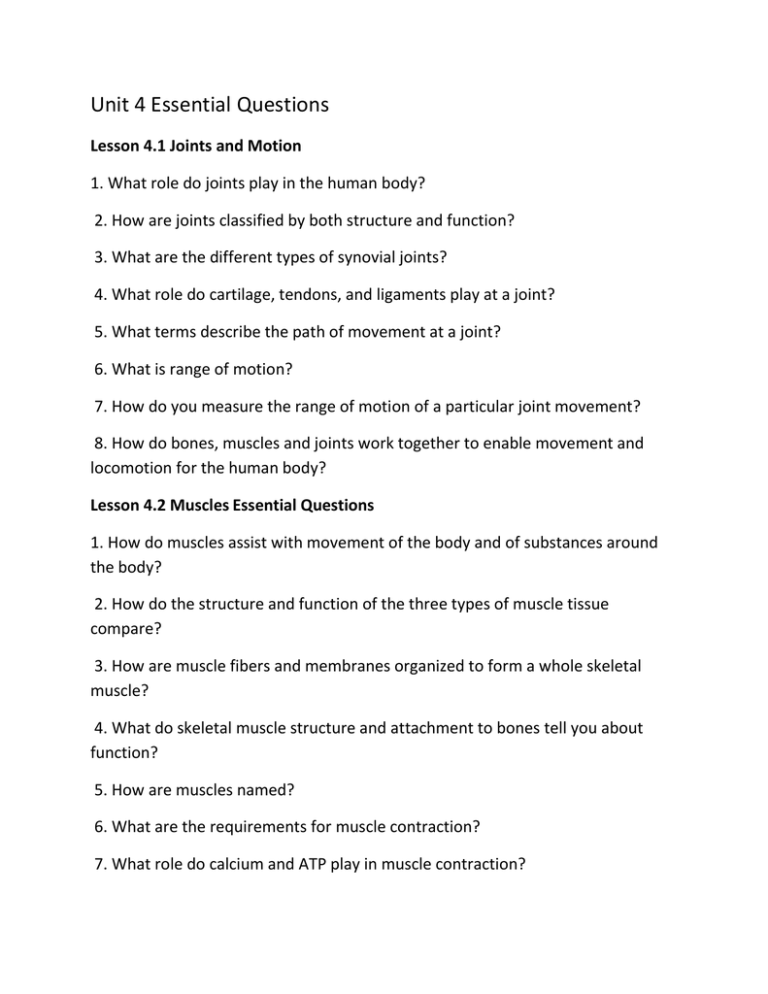
Unit 4 Essential Questions Lesson 4.1 Joints and Motion 1. What role do joints play in the human body? 2. How are joints classified by both structure and function? 3. What are the different types of synovial joints? 4. What role do cartilage, tendons, and ligaments play at a joint? 5. What terms describe the path of movement at a joint? 6. What is range of motion? 7. How do you measure the range of motion of a particular joint movement? 8. How do bones, muscles and joints work together to enable movement and locomotion for the human body? Lesson 4.2 Muscles Essential Questions 1. How do muscles assist with movement of the body and of substances around the body? 2. How do the structure and function of the three types of muscle tissue compare? 3. How are muscle fibers and membranes organized to form a whole skeletal muscle? 4. What do skeletal muscle structure and attachment to bones tell you about function? 5. How are muscles named? 6. What are the requirements for muscle contraction? 7. What role do calcium and ATP play in muscle contraction? 8. What is a sarcomere? 9. How does a sarcomere contract and lengthen to cause muscle contraction? 10. How is the condition rigor mortis related to muscle contraction? 11. How do nerves interact with muscles? 12. How can we assess muscle function? Lesson 4.3 Blood Flow Essential Questions 1.What types of muscle help move blood around the body? 2.What is the relationship between the heart and the lungs? 3.What is the pathway of blood in and out of the heart in pulmonary and systemic circulation? 4.How do the structure of arteries, veins and capillaries relate to their function in the body? 5.What unique features of veins help move blood back to the heart? 6.What are varicose veins? 7.Why don’t we ever hear about varicose arteries? 8.What are the major arteries and veins in the body and which regions do they serve? 9.What is cardiac output? 10.How does cardiac output help assess overall heart health? 11.How does an increased or decreased cardiac output impact the body? 12.What is blood pressure? 13.How can the measurement of blood pressure in the legs be used to assess circulation? 14.What is peripheral artery disease? 15.Why can smoking lead to peripheral artery disease? Lesson 4.4 Energy and Motion: Exercise Physiology 1.What is the connection between power and movement in the body? 2.How does the body maintain a supply of ATP during exercise? 3.What body systems are involved with powering an athlete through a running race? 4.What is muscle fatigue? 5.How are we able to overcome muscle fatigue? 6.What are performance-enhancing drugs? 7.How do specific performance-enhancing drugs affect the human body? 8.Why should certain performance-enhancing drugs be banned from athletic competition? 9.What are areas to consider when designing a training plan for an athlete?





